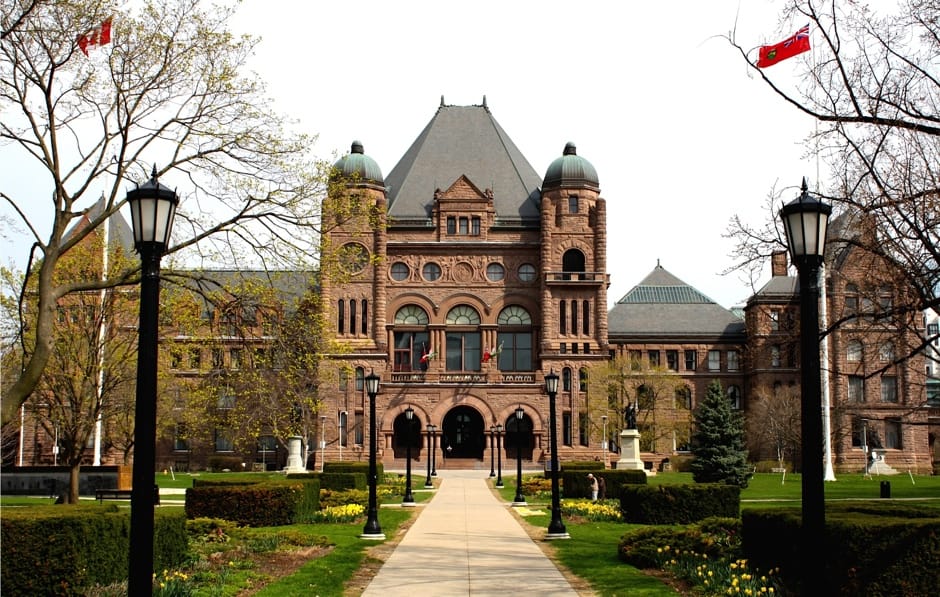The proposed amendment to the University of Toronto Act that would allow non-Canadian citizens to sit on the university’s Governing Council has been garnering significant attention; however, it is but one of 45 Schedules included in the 2015 Ontario Budget that will affect the university.
The provincial government has allocated $3.49 billion for universities this fiscal year, an increase from last year’s $3.48 billion figure. Taking into account the projected provincial inflation rate of 1.2 per cent, the increased funding actually represents a decrease of nearly one per cent.
The Ontario Confederation of University Faculty Associations (OCUFA) has come out against the proposed budget, saying, “ …austerity remains the reality for Ontario’s universities.”
In a press release, Kate Lawson, president of the OCUFA, warned of the dangers of privatization in higher education: saying that “We need to recognize the quiet shift of higher education costs away from the public realm and onto students and their families. For the first time ever, tuition fees now account for more than half of university budgets — this is another form of privatization.”
The Council of Ontario Universities (COU) was not as critical of the budget, accepting that the government could not increase funding due to fiscal pressures. At the same time, the COU also says “future strategic reinvestment will be necessary to sustain excellence for students and to fully realize the power of universities to drive economic growth.”
“Universities realize that increasing funding for universities isn’t possible in the government’s current fiscal reality, but they will be looking to the province for strategic reinvestment in the sector as Ontario’s books are balanced,” said Bonnie Patterson, COU president, in a press release.
Ben Coleman, president of the University of Toronto Students’ Union (UTSU), expressed disappointment at the lack of funding presented in the budget. “Universities in Ontario are still pressured to increase tuition and find other sources of money, such as increasingly commercialized research and high ancillary fees, in order to balance their budgets,” Coleman says.
Discussing funding
According to the budget, consultation between the provincial government and the university sector is set to commence. The discussions will centre on the differentiated funding model that is to accompany the Strategic Mandate Agreements (SMA) signed by Ontario universities. “Differentiation within postsecondary education means focusing on institutional strengths while preserving and enhancing educational quality for students within a sustainable cost structure,” reads a portion of the budget document.
The government claims that the new funding model will result in “more effective use of government and institutional resources to improve overall performance of the system.”
Coleman says that the UTSU will be following the impact of the new funding model closely. He says differentiation would benefit the University of Toronto due to its broad areas of specialization as outlined in its SMA. “However, if that frees up money in the university budget, there’s no guarantee that it’ll get spent on improving undergraduate education,” Coleman says.
The OCUFA sees the government’s push for differentiation as an indication of “a continued interest in playing a more directive role in institutional planning and governance.”
Consultations have already begun with former deputy minister Suzanne Herbert as the executive lead.
OSAP changes
The provincial government also announced measures to modernize the Ontario Student Assistance Program (OSAP). These measures include the indexation of maximum student aid levels and debt cap, eliminating the requirement to report vehicles as assets, a loan rehabilitation program, and streamlining of administration.
The annual indexation of student aid levels to inflation would mean that more aid would be available for students; however, the indexation of debt caps would mean that repayable debt would also increase for students. Repayable debt will still be 60 per cent of the maximum available student aid.
The Ontario Student Loan Rehabilitation Program aims to allow those who have defaulted on the Ontario portion of their student loans to return those loans to “good standing through scheduled partial payments.”
According to the OCUFA’s budget analysis, some students found some changes “sensible;” however, they note that these changes “do nothing to address the actual cost of postsecondary education.”
Coleman was more concerned about how the spending on the University of Toronto Advance Planning for Students (UTAPS) will be affected by the indexation of OSAP. UTAPS is a general financial aid program for all students except internationals and those studying part-time . In 2013-2014, UTAPS accounted for 22 per cent of the total student assistance provided by the university, 94 per cent of UTAPS recipients were also OSAP recipients.
“U of T pays the amount OSAP can’t cover through UTAPS grants, so in effect, this change will shift more of the cost into loans for students who are the most needy,” Coleman explains, adding that he wants to “make sure that any savings from students using less UTAPS are diverted right back into bursaries.”


